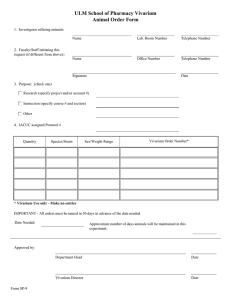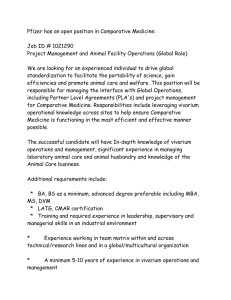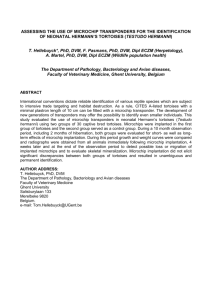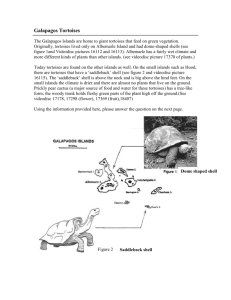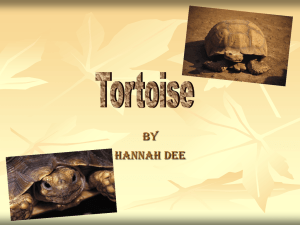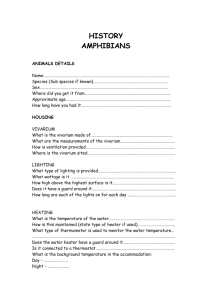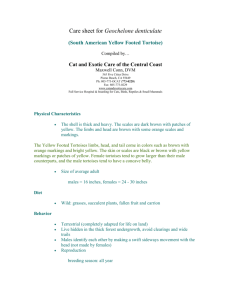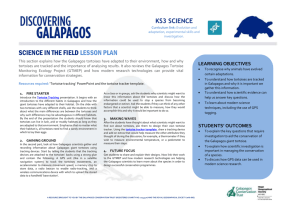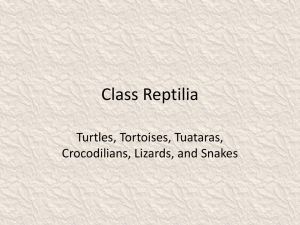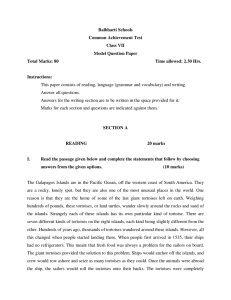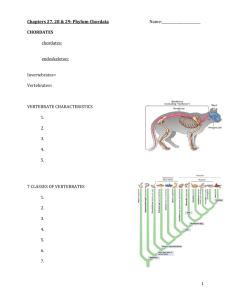Tortoise_husbandry - rhodes-vets
advertisement
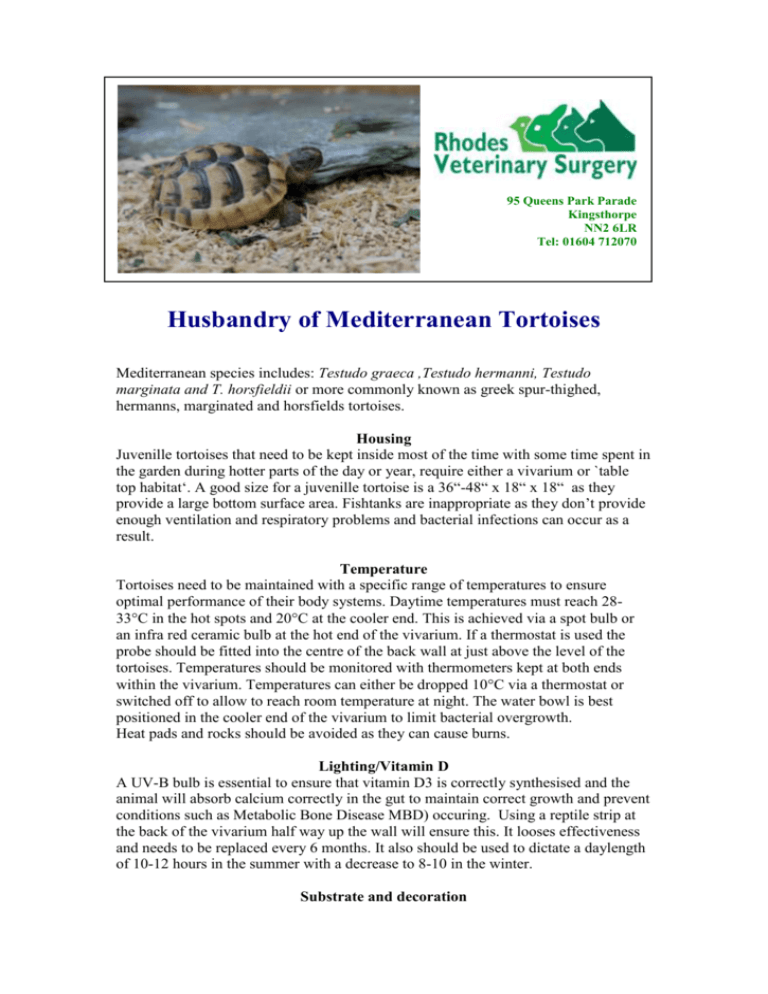
95 Queens Park Parade Kingsthorpe NN2 6LR Tel: 01604 712070 Husbandry of Mediterranean Tortoises Mediterranean species includes: Testudo graeca ,Testudo hermanni, Testudo marginata and T. horsfieldii or more commonly known as greek spur-thighed, hermanns, marginated and horsfields tortoises. Housing Juvenille tortoises that need to be kept inside most of the time with some time spent in the garden during hotter parts of the day or year, require either a vivarium or `table top habitat‘. A good size for a juvenille tortoise is a 36“-48“ x 18“ x 18“ as they provide a large bottom surface area. Fishtanks are inappropriate as they don’t provide enough ventilation and respiratory problems and bacterial infections can occur as a result. Temperature Tortoises need to be maintained with a specific range of temperatures to ensure optimal performance of their body systems. Daytime temperatures must reach 2833C in the hot spots and 20C at the cooler end. This is achieved via a spot bulb or an infra red ceramic bulb at the hot end of the vivarium. If a thermostat is used the probe should be fitted into the centre of the back wall at just above the level of the tortoises. Temperatures should be monitored with thermometers kept at both ends within the vivarium. Temperatures can either be dropped 10C via a thermostat or switched off to allow to reach room temperature at night. The water bowl is best positioned in the cooler end of the vivarium to limit bacterial overgrowth. Heat pads and rocks should be avoided as they can cause burns. Lighting/Vitamin D A UV-B bulb is essential to ensure that vitamin D3 is correctly synthesised and the animal will absorb calcium correctly in the gut to maintain correct growth and prevent conditions such as Metabolic Bone Disease MBD) occuring. Using a reptile strip at the back of the vivarium half way up the wall will ensure this. It looses effectiveness and needs to be replaced every 6 months. It also should be used to dictate a daylength of 10-12 hours in the summer with a decrease to 8-10 in the winter. Substrate and decoration Mediterranean tortoises require a dry habitat, which can be achieved with natural maize cob granulate (chipsi mais), beech chip or sand. Rocks, cork bark and shredded paper are a few things that could be used to provide hiding areas and interest for climbing. The substrate should be spot cleaned daily for any soiling and changed and fully cleaned with a suitable disinfectant (F10 is a good example) regularly. Feeding This section is covered on a seperate fact sheet. A shallow water container should be provided to drink from and climb in, or the tortoises regularly bathed. This should be changed daily. Outdoor housing This is only recommended for short periods in heat of summer to encourage browsing of a variety of weeds or can be used in older tortoises that have been acclimatised to being outside and do not adjust well to being indoors. To ensure adequate temperatures either a ‘cloche‘ area or heated area is advisable. The outdoor pen can be constructed using a variety of materials, wood, stone, breeze blocks, chicken wire. It is worth remembering the ability of tortoises to climb and dig when designing one! Also care should be taken to protect the enclosure from predators such as foxes, rats and large birds. As with the design of the vivarium hiding areas and areas of interest are important, as is a shallow water dish/tray. Live plants such as the weeds listed in the feeding sheet are excellent additions too.
